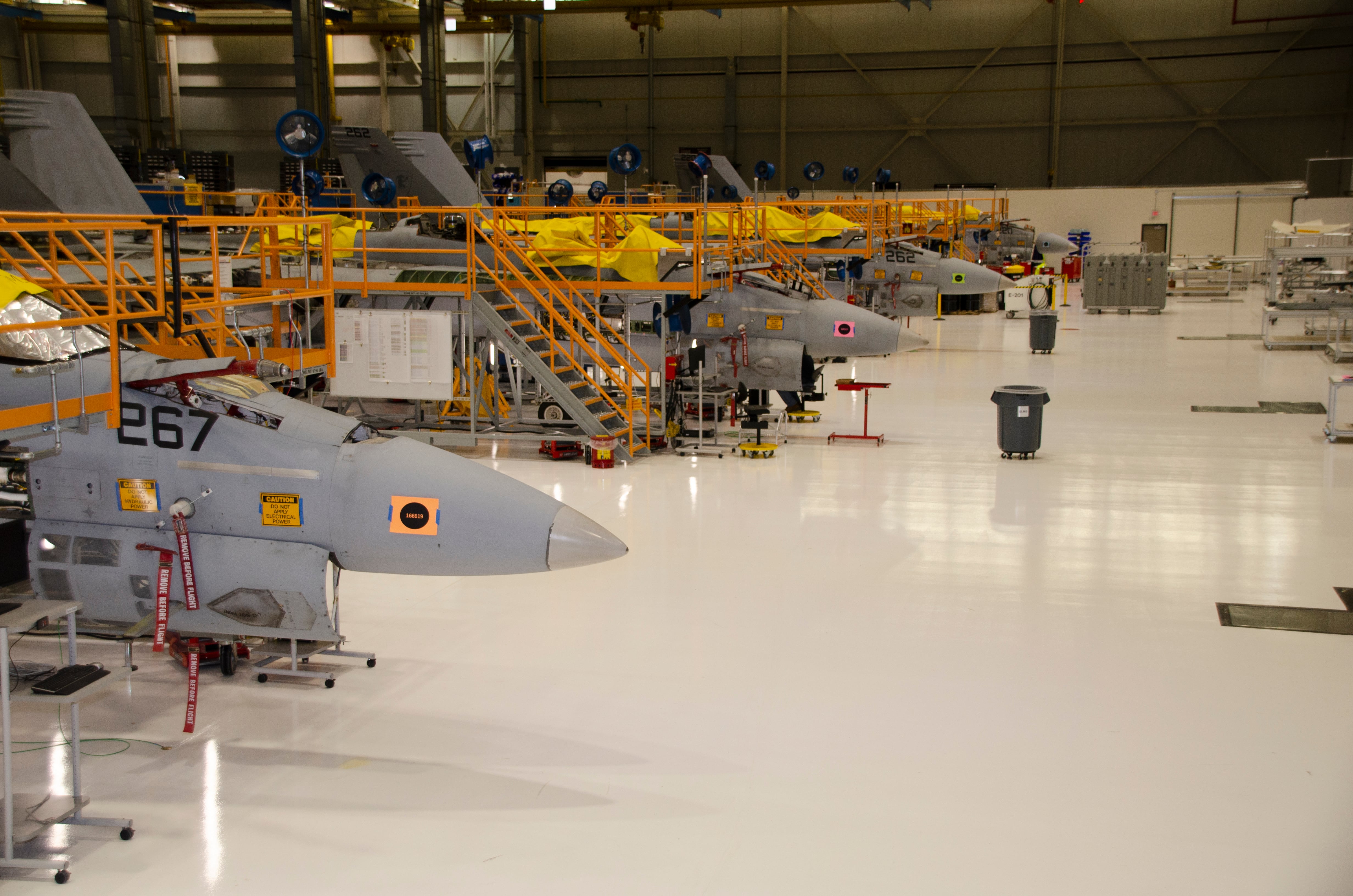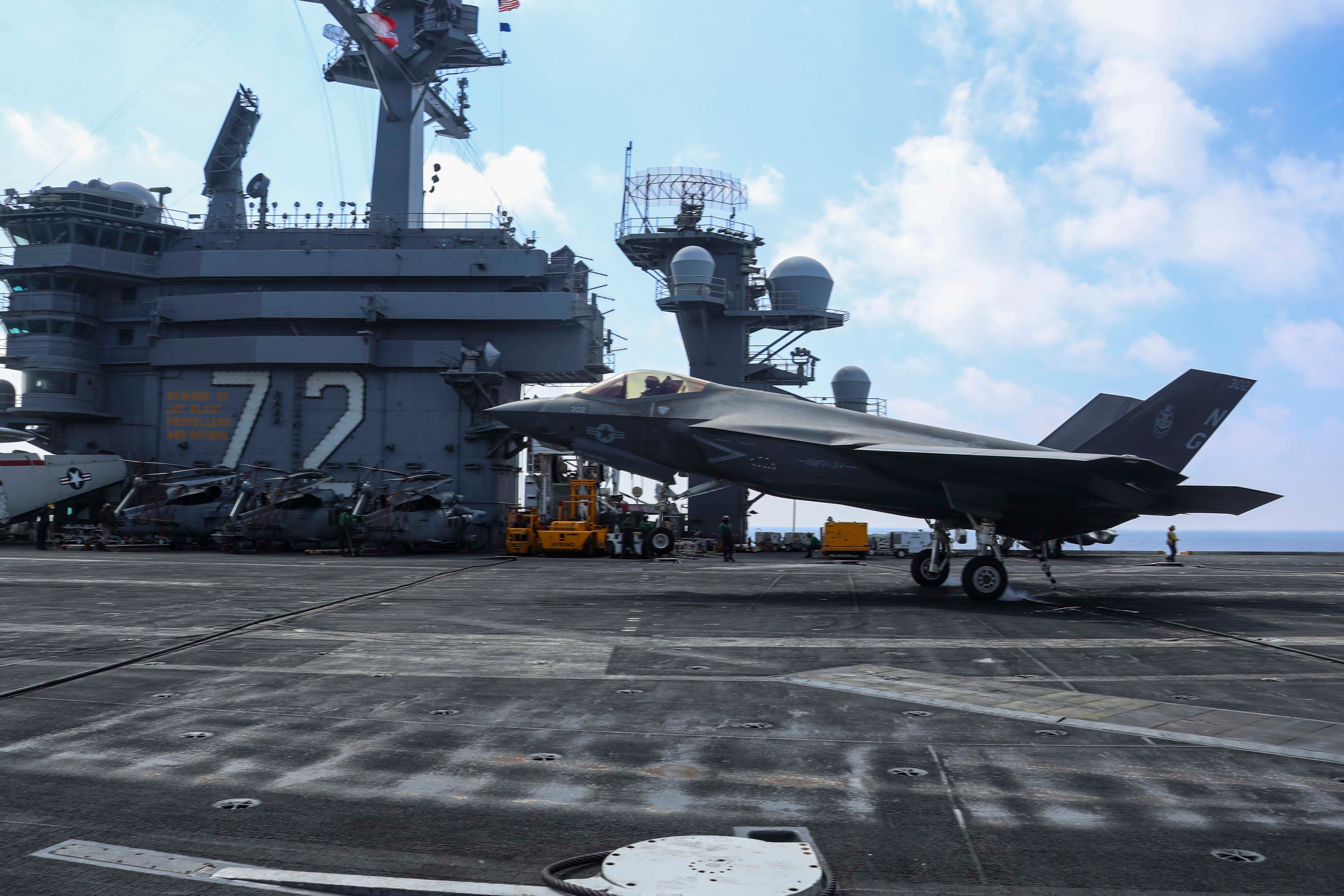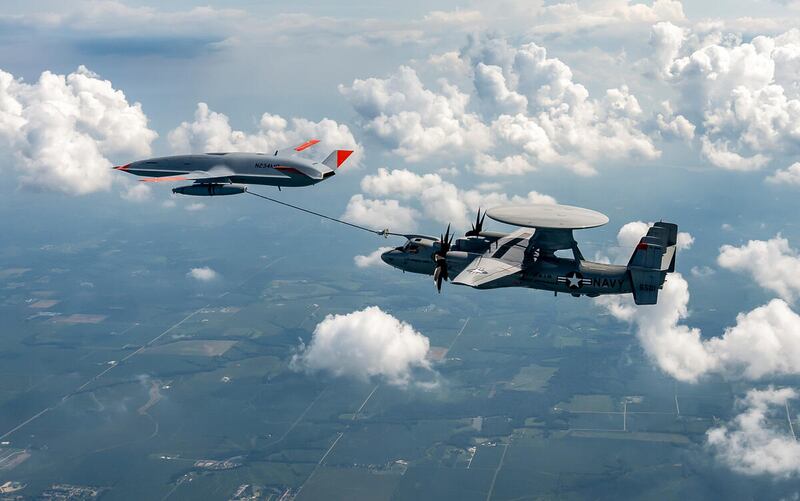SAN DIEGO — The U.S. Navy has a carefully balanced plan to dig out of a fighter shortfall and stave off another in the 2030s — but several pieces must come together exactly as planned.
The plan involves adding 4,000 more flight hours of service life to existing F/A-18E/F Super Hornets, fully fielding the F-35C Joint Strike Fighter and developing the Next Generation Air Dominance program’s F/A-XX manned fighter — and doing all of that on schedule.
Vice Adm. Kenneth Whitesell, the commander of Naval Air Forces, told Defense News in a Feb. 15 interview that the Navy is making progress in adding new fighters to its inventory and will have fully closed the gap — which had grown to 49 aircraft — by 2025.
But by 2030 or 2035, the F/A-XX must be developed and in its fielding process; otherwise, Whitesell said, the Navy will start losing jets from the inventory without bringing in any replacements, creating a new fighter shortfall.
The first lever is the Super Hornet Service Life Modification program. The SLM program will take Block II aircraft hitting the end of their planned 6,000-hour service life and add 4,000 more hours of flight time, plus upgrade them to the Block III capability set through a variety of airframe repairs and the insertion of an advanced cockpit.
Whitesell acknowledged some early challenges in SLM but said the Navy and Boeing are working together to ensure a smooth flow of jets into and out of the upgrade period.
When Boeing opened up the first few jets inducted into the program, he said, “they found some hot spots and some more corrosion in the platform than we thought.”
This has created a backlog of jets in the program that are taking longer than planned because of corrosion issues, as well as a backlog of jets waiting to get inducted into SLM that are having to instead wait until there’s room at Boeing’s St. Louis, Missouri, and San Antonio, Texas, facilities.

“Boston Consulting Group has gone to Boeing and has advised them on how to improve the production efficiency of their SLM line,” Whitesell said. But “we’ve realized that this can’t be done just by industry. So we’ve gone in and started two initiatives, we’ve done pre-SLM work based on what Boeing has seen.”
Under one program, Navy personnel at service facilities conduct corrosion correction work on jets at the 6,000-hour mark, and then send the aircraft to Boeing for SLM — thereby removing the corrosion work from Boeing’s plate and allowing the contractor to stick to the original work plan. Whitesell said the Navy has completed this work on 19 jets so far.
Under the second program, the Navy has done a “maintenance reset” on about 40 jets based on data from Boeing, and then sent the aircraft back to the fleet to continue flying. These jets are meant to eventually arrive at their SLM periods at Boeing facilities in better shape, again letting the company hew to the original work scope and release the jets on schedule. Boeing reported that its early jets have taken about 18 months, which the company plans to drive down to 12 months.
If all goes well, by 2025 “we won’t have a strike fighter inventory shortfall,” Whitesell said. “It’s those levers that are being pulled: SLM by Boeing, delivery of SLM. Pre-SLM work to give Boeing better airplanes. Maintenance reset for us to get birds ready. And [Boston Consulting Group] kind of telling a new production company how to do maintenance rework.”
Whitesell said 15 aircraft have been delivered from SLM. Those aircraft will have 4,000 more hours of flight time available to the Navy, but there was some question as to how many years that might equate.
Whitesell said the Navy’s models previously assumed each airframe flew between 210 and 230 hours per year. Because the Super Hornets have been the workhorse of the fleet, the Navy has now bumped that up to 300 hours per year. Assuming that new metric holds true, each airframe has about 13 years left before retirement.
That means by the 2031-2032 time frame, Super Hornets will start leaving the inventory, and then F/A-XX must be ready to enter the fleet.
SLM “builds some space” for the Next Generation Air Dominance program and F/A-XX development, but “no one’s spiking the football.” If the next-gen aircraft isn’t ready for prime time in the early 2030s, the Navy will find itself in trouble.
Less likely to affect the inventory in the 2030-2035 time frame, but still a long-term consideration for the fighter inventory, is how quickly to burn through F-35C flight hours now. The Navy previously decreased the number of F-35Cs that would deploy in an air wing, from two 10-plane squadrons down to one, only to change it to one squadron with 14 planes.
Now, given that the U.S. perceives China as a top threat and aims to put its best equipment in the Asia-Pacific region, the Navy is mulling a decision to return to 20 planes in the air wing — either in one large squadron or the original two 10-plane squadrons.

Whitesell was careful to note that the plan is still 14 jets in a single squadron. The Carl Vinson Carrier Strike Group recently returned from deployment with the 10-jet Strike Fighter Squadron 147, and the Abraham Lincoln Carrier Strike Group is currently deployed with 10 Marine Corps F-35Cs from Marine Fighter Attack Squadron 314. But all the upcoming squadrons that transition into the F-35C will have 14 jets, with Strike Fighter Squadron 97 being the next in line to transition and then deploy.
“The primary driver right now is to get the maximum capability and fifth-generation platforms forward into the Western Pacific. So because of that, VFA-97 — the next Navy squadron to transition — is a 14-plane JSF [Joint Strike Fighter] squadron. We’ve done talks with our Master Aviation Plan … about, as Lockheed Martin continues to build, there is potential to go to 20 total JSF. And now we have to decide whether that’s going to be a single squadron or whether it’s going to be two squadrons. Or if [the Next Generation Air Dominance program] comes along faster, exactly how we’re going to build JSF out,” Whitesell said.
“But we are going to decide [based on] repair capabilities, toolkits, human beings — is it more efficient to have one 14-plane squadron? One 20-plane squadron? Or can we potentially go to two 10-plane squadrons?”
Whitesell must consider several factors in any move to 20 F-35Cs in the carrier air wing. The obvious benefit is putting more advanced sensing and warfighting capability into the most challenging theater. But that would mean eating up more flight hours than planned at the beginning of the F-35 program, which could cause challenges later on.
Whitesell said F-35 manufacturer Lockheed Martin had slowed its deliveries of the “C” variant to the Navy due to coronavirus-related challenges, but added the firm has a plan to get back on track. Getting deliveries sped up would make it an easier decision to use more jets now — and positive news on F/A-XX development would create less concern about the back end of the F-35C program, when the effects of increased usage now would be felt.
Additionally, Whitesell would have to find the money for the pilots, the maintenance, the spare parts and more now, despite the recently tight budgets. He noted that Navy leadership has been supportive of the naval aviation budget, but it’s unclear if the service could afford to double its spending on F-35C contributions to the air wing compared to the first two JSF deployments.
And, Whitesell said, there’s the question of whether there’s physically space on the aircraft carrier to have 20 JSFs.
Defense News visited carrier Carl Vinson as it returned to San Diego, California, from its deployment to the Indo-Pacific region in February, and several crew members discussed the high “deck density” — or the unusually greater number of aircraft and support equipment squeezed into the flight deck and hangar bay space on the ship.
The commander of the Carl Vinson Carrier Strike Group, Rear Adm. Dan Martin, acknowledged the challenges that would come with adding more aircraft to future air wings, but he told Defense News the Navy ought to “shape the air wing that’s relevant for the threat.”
Whitesell said he is considering Martin’s request to add two more Growlers, for a total of nine, as well as adding the extra Joint Strike Fighters — plus the addition of five MQ-25A unmanned tankers to the air wing for a 2026 first deployment.

While this is a lot to ask of the Nimitz-class carriers, Whitesell suggested that first-in-class Gerald R. Ford and its follow-on ships might be better equipped for this larger air wing.
“We have to wait until we transition to Ford class. The difference in the loading from a Nimitz class to a Ford class — we just did the experiments up in Lakehurst, [New Jersey], about three or four weeks ago, and the loading on Ford class gives us a ton of different options on what future air wings are going to look like. In moving the island aft, having more capacity for storage, Gerald R. Ford is going to be a game-changer for us when it comes down to capacity and numbers on a flight deck,” Whitesell said.
Though Vinson carried out the first “air wing of the future” deployment, that air wing has several upcoming improvements, Whitesell explained:
- Super Hornets will be upgraded to the Block III capability.
- The number of F-35Cs will increase, and the jets will have the improved Block IV capability.
- The MQ-25 will make its debut in 2026.
- The EA-18G Growler will go through a Growler Capability Modification program specifically focused on improving its airborne electronic attack capabilities.
- The E-2D will be upgraded with the Delta System Software Configuration.
- The Next Generation Air Dominance family of systems will provide manned-unmanned teaming options between the F/A-XX and whatever unmanned aircraft come out of the program.
- The MH-60R and MH-60S helicopters will be replaced by whatever comes out of the Future Vertical Lift program.
Megan Eckstein is the naval warfare reporter at Defense News. She has covered military news since 2009, with a focus on U.S. Navy and Marine Corps operations, acquisition programs and budgets. She has reported from four geographic fleets and is happiest when she’s filing stories from a ship. Megan is a University of Maryland alumna.





